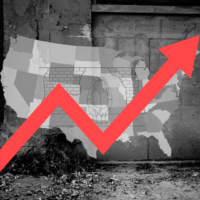Empowering America: The Transformative Impact of Government Assistance on Poverty
In the complex and often challenging battle against poverty, government assistance programs are a clear beacon of hope. These programs play a pivotal role in alleviating the burdens of poverty that millions of individuals and families face daily. From providing essential financial support to addressing crucial healthcare needs and bridging gaps in education, public benefits are a powerful tool in the fight against the suffering poverty causes.
While the COVID-19 pandemic brought unprecedented challenges, it also showed us the critical role that public programs can play in fighting poverty. Bolstered by the pandemic relief measures, these programs demonstrated their ability to keep millions of people above the poverty line in both 2020 and 2021, who would otherwise have dipped below it due to the economic disruptions of COVID. These robust policy measures resulted in the U.S. poverty rate reaching its lowest point (since this data began being recorded in 1967), subsequently achieving a new historic low of 7.8% in 2021. Unfortunately, the U.S. Census Bureau announced this week that in 2022 the Supplemental Poverty Measure (SPM) rate jumped upward from the previous year by 4.6 points to 12.4%. This jump, which aligned with these measures ceasing, it illustrates the effectiveness of support and safety net programs and how much of a difference they can make in people’s lives.
Legal Council’s mission and purpose have been to use the power of the law to protect and secure these indispensable benefits for our clients.
Policy Research Highlights
Strengthening public benefits programs in response to the COVID-19 pandemic significantly mitigated the economic consequences of the crisis and contributed to a historic reduction in poverty rates, particularly among children and people of color. The Center on Budget and Policy Priorities (CBPP) recently issued an in-depth report, “Government’s Pandemic Response Turned a Would-Be Poverty Surge Into a Record Poverty Decline”, demonstrating this impact. Increases and flexibility in benefits programs brought the poverty rate in 2020 to its lowest level on record, and then again to the aforementioned record low.[1]
Additionally, 2021 saw the largest single-year drop in childhood poverty. The CBPP report illustrates that the American Rescue Plan’s Child Tax Credit, the third round of stimulus payments, and other relief policies lowered childhood poverty levels to a historic 5.2%. Going even further, the report cited the Rescue Plan changes, in conjunction with government assistance, with lifting people above the poverty line more than any other single piece of legislation in the last 50 years. Pandemic benefits also decreased our country’s racial economic disparities. In 2021, these supports kept 30% of Black and 24% of Latino children out of poverty. While economic inequities for these groups remain, the pandemic response illustrates that solutions are within our reach if we choose to pursue them.[2]
The Uptick in 2022
Regrettably, the reprieve in poverty levels was short-lived, and the expiration of protective policy measures is returning us to the status quo. Increasing poverty levels in 2022 is directly linked to the termination of pandemic-era supports. While the official poverty rate may not have appeared markedly different from the previous year, the Census Bureau’s more comprehensive Supplemental Poverty Measure (SPM) reveals the stark reality of the situation—a sharp rise in the experience of poverty for Americans once pandemic supports began ending. The racial inequity in the 2022 data speaks for itself, with Black child poverty increasing from 8.3 percent to 18.3 percent and Latino child poverty rising from 8.4 percent to 19.5 percent. [3]
As we reflect on these troubling statistics, it is clear that addressing the root causes of poverty and ensuring the stability and well-being of our nation’s children must remain a top priority. The policies and support systems that proved effective in reducing poverty must be revisited and reinforced to prevent further setbacks on the path toward a more equitable and prosperous society.
Conclusion
Advocates in this area have long understood the impact of government programs on poverty and post-pandemic data provides proof. These vital initiatives have consistently proven their worth, serving as a lifeline for millions of individuals and families grappling with the harsh realities of poverty. The COVID-19 pandemic underscored the critical role these programs play in times of crisis, with record reductions in poverty rates that demonstrated their efficacy. The recent uptick in poverty rates under the SPM serves as a stark reminder of the importance of continued support and safety nets during challenging economic times. We must learn from this data and redouble our efforts to address the root causes of poverty by strengthening government programs that we know can be a powerful force for positive change.
–
[1] Trisi, Danilo. “Government’s Pandemic Response Turned a Would-Be Poverty Surge into a Record Poverty Decline”. Center on Budget and Policy Priorities. 29 August 2023, www.cbpp.org/research/poverty-and-inequality/governments-pandemic-response-turned-a-would-be-poverty-surge-into.
[2] Ibid.
[3] Shrider, Emily A. & John Creamer. “Poverty in the United States: 2022”. United States Census Bureau. 12 September 2023. https://www.census.gov/content/dam/Census/library/publications/2023/demo/p60-280.pdf


